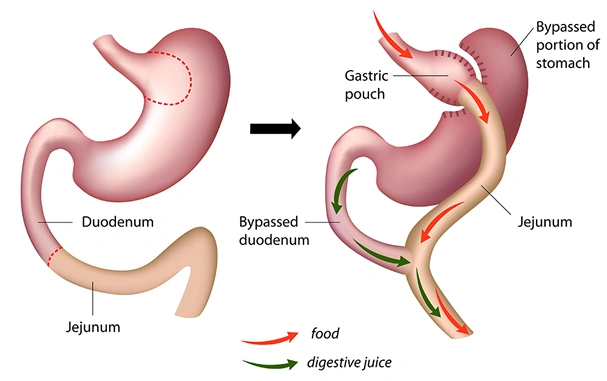It is considered the standard procedure against which all others must be compared. Many details have been improved in recent years, making it safer and more effective.
In this operation, in addition to restricting the amount of food that can be ingested, a significant malabsorption component is added to achieve greater weight loss. It comprises 40% of the metabolic surgeries currently performed and is the most common procedure in Latin America, including South America. In this procedure, a proximal gastric pouch of 15 to 30 ml is created, separate from the distal stomach. These anatomical changes lead to alterations in signaling between luminal factors and the intestinal mucosa, thus generating neurohumoral effects that further lead to alterations in hunger, satiety, energy balance, modest malabsorption, and weight loss.


• Produces significant long-term weight loss (60 to 80 percent excess weight loss).
• Restricts the amount of food that can be consumed.
• Can lead to conditions that increase energy expenditure.
• Produces favorable changes in intestinal hormones that reduce appetite and increase satiety.
• Typical maintenance of >50% excess weight loss